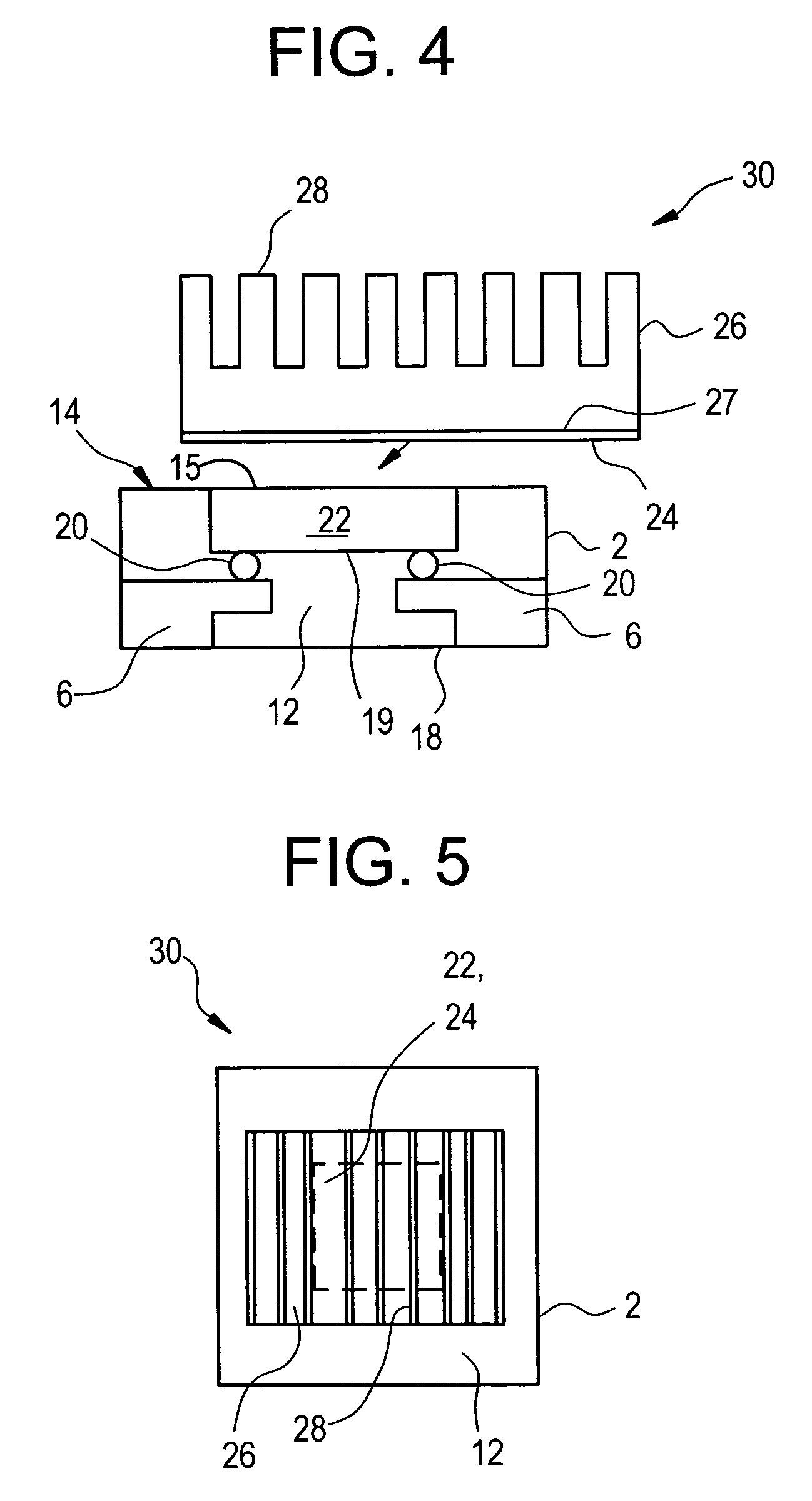Drop-in heat sink and exposed die-back for molded flip die package
a technology of drop-in heat sink and flip-type package, which is applied in the direction of semiconductor devices, semiconductor/solid-state device details, electrical equipment, etc., can solve the problems of not being able to efficiently dissipate heat, generating additional heat, and not being as good a thermal conductor as ceramics
- Summary
- Abstract
- Description
- Claims
- Application Information
AI Technical Summary
Benefits of technology
Problems solved by technology
Method used
Image
Examples
second embodiment
[0065]FIG. 10 illustrates a flow chart of a method 200 to attach a heat sink 26 to a die 22 in a MFD IC 2 according to the present invention. The method 200 represents a first method for creating the second MFD IC heat sink assembly 32. The method 200 begins with step 202 wherein the MFD IC 2 is manufactured according to a conventional manufacturing process (or provided to the user of method 200), except that molding material 12 is not yet added to encapsulate the assembled MFD IC 2. Then, in step 204, the heat sink 26 is attached to the die 22, using any appropriate means for attaching the heat sink 26 to the die 22, such as those discussed previously. Following the attachment of the heat sink 26 to the 22, the assembled heat sink 26 and 22 are encapsulated with the molding material 12 in step 206.
[0066]FIGS. 11-13 illustrate a MFD IC 2 that is assembled according to an alternative embodiment of the present invention. In FIG. 11, a MFD IC 2 that has been manufactured in the convent...
third embodiment
[0071]FIG. 17 illustrates a flow chart of a method 300 to attach a heat sink 26 to a die 22 in a MFD IC 2 according to the present invention. The method 300 represents a first method for creating the third MFD IC heat sink assembly 34. The method 300 begins with step 302 wherein the MFD IC 2 is manufactured according to a conventional manufacturing process (or provided to a user of method 300), except that molding material 12 is not yet added to encapsulate the assembled MFD IC 2. Then, in step 304, the heat sink 26 is attached to the die 22, using any suitable means for attaching the heat sink 26 to the die 22, such as those discussed above. Following the attachment of the heat sink 26 to the die 22, the assembled heat sink 26 and die 22 are encapsulated with the molding material 12 in step 306.
[0072]FIG. 18 illustrates a bottom view of a MFD IC 2 encapsulated by a molding material, then modified according to an embodiment of the present invention. FIG. 19 illustrates a bottom view...
PUM
 Login to View More
Login to View More Abstract
Description
Claims
Application Information
 Login to View More
Login to View More - R&D
- Intellectual Property
- Life Sciences
- Materials
- Tech Scout
- Unparalleled Data Quality
- Higher Quality Content
- 60% Fewer Hallucinations
Browse by: Latest US Patents, China's latest patents, Technical Efficacy Thesaurus, Application Domain, Technology Topic, Popular Technical Reports.
© 2025 PatSnap. All rights reserved.Legal|Privacy policy|Modern Slavery Act Transparency Statement|Sitemap|About US| Contact US: help@patsnap.com



